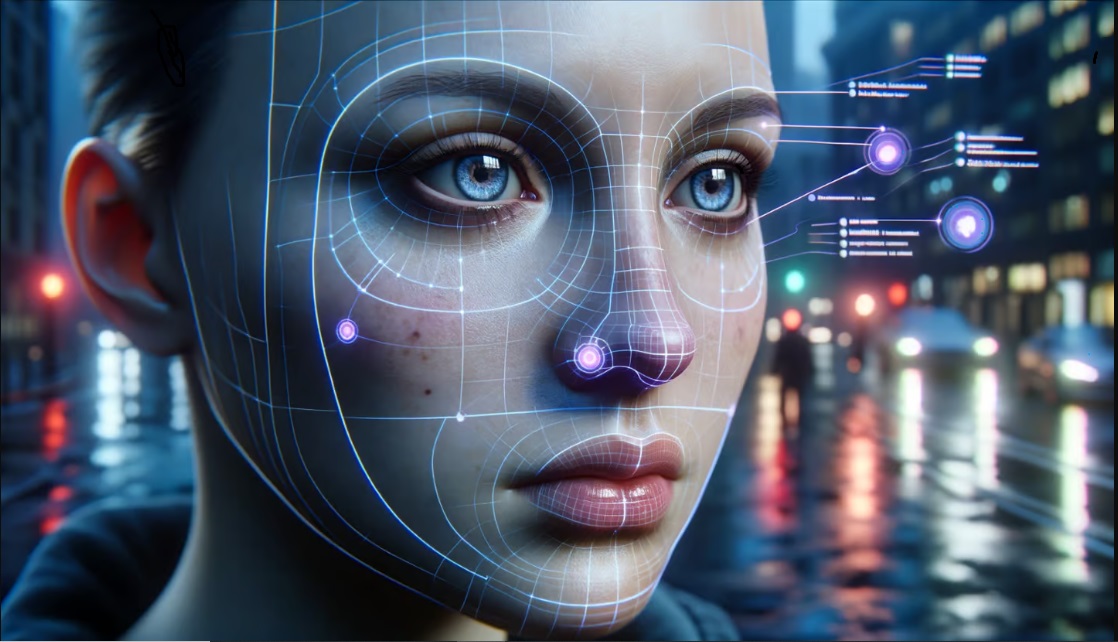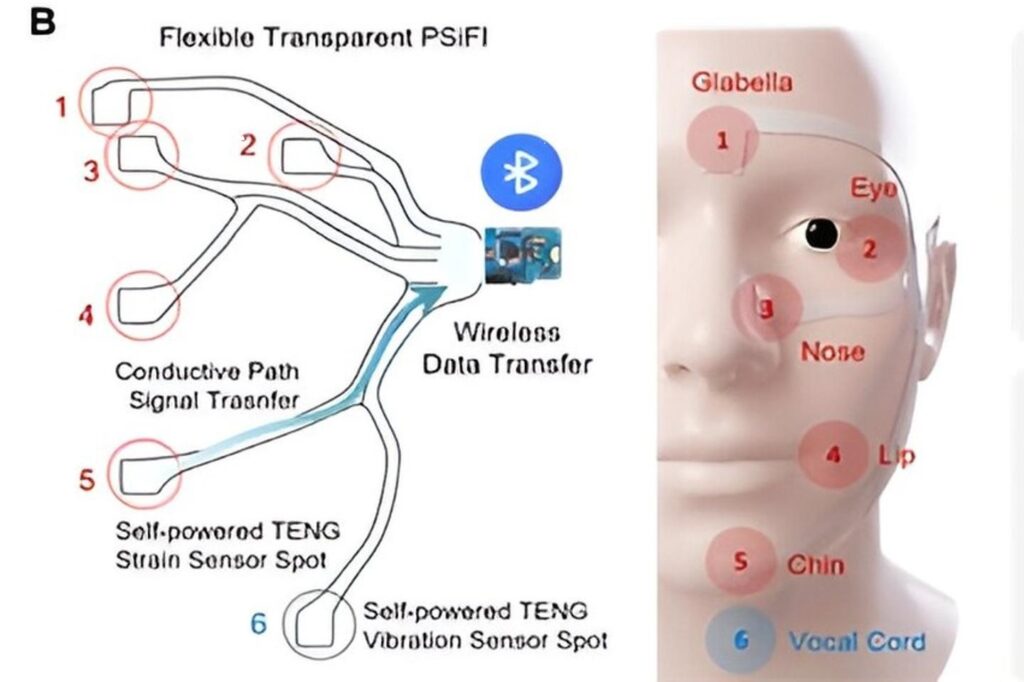
25 Feb Wearable face sensors add to the evolution of tech that “gets”us
In the fact-paced world of technology, advancements seem to emerge at an exponential rate, constantly reshaping the landscape of human interaction with machines. Among these innovations, wearable face sensors stand out as a significant milestone in the evolution of technology that intimately connects with human emotions and expressions. These sensors, equipped with state-of-the-art technology, not only capture physical data but also delve into the intricate realm of human emotions, paving the way for a deeper understanding of user behavior and needs.
Understanding Wearable Face Sensors: A Technological Marvel
Wearable face sensors are a marvel of modern engineering, designed to detect and interpret facial expressions with remarkable precision. Leveraging cutting-edge technologies such as machine learning, computer vision, and artificial intelligence, these sensors can analyze a multitude of facial cues, including micro expressions, muscle movements, and changes in skin temperature. By meticulously mapping these subtle variations, wearable face sensors can decipher a wealth of information regarding the user’s emotional state, congnitive load, and overall well-being.
Applications Across Diverse Industries
The applications of wearable face sensors span across a multitude of industries, each harnessing the power of this technology to achieve distinct objectives. In healthcare, these sensors serve as invaluable tools for monitoring patient’s emotional states, enabling healthcare providers to deliver personalized care with uparalleled sensitivity. By analyzing facial expressions and physiological responses, healthcare professionals can gauge pain levels, assess mental health conditions, and track the progression of neurological disorders, revolutionizing the dianostic and treatment processes.
Furthermore, wearable face sensors hold immense potential in the realm of education and learning. By capturing students’ facial expressions during learning activates, educators can gain insights into their angagement levels, comrehension, and responses. This real-time feedback empowers teachers to tailors their instructional strategies, fostering a more conducive learning environment and maximing student outcomes.
Enhancing User Experience and Interaction
In the realm of the human-computer interaction, wearable face sensors are poised to redefine the user experience across various digital platform. By integrating these sensors into devices such as smartphones, tablets, and augmented reality hard sets, technology companies can serate immersive experiences that adapt to users’ emotions and preferences in real time. Whether it’s customizing content based on mood, providing personlized recommentations, or enhancing social interactions in virtual environments, wearable face sensors hold the key to unlocking a new era of intuitive and empathetica technology.
Moreover, the integration of facial recognition technology with wearable devices opens up a myriad of possibilities in the fields of security and authentication. From unlocking smartphones to securing access to sensitive data, facial recognition offers a seamless and secure authentication mechanism that is inherently tied to the user’s identity. However, concerns regarding privacy, data security, and potential misuse of facial recognition technology underscore that need for robust regulations and ethical frameworks to safeguards users’ rights and ensure responsible deployment.
Challenges and Future Directions
While wearable face sensors offer unprecedented insights into human behavior and emotions, they also pose significant challenges and ethical considerations. The collection and analysis of sensitive biometric data rise concerns regarding privacy infrigements, data security, and algorithms biases. Additionally, the potential for misuse, such as unauthorized surveillance or targeted advertisting based on emotional cues, underscores the importance of establishing clear guidelines and safeguards to protect user’s rights and autonomy.
Looking ahead, the future of wearable face sensors holds immense promise, with ongoing research and development efforts aimed at enhancing their capabilities and expanding their applications. Advancements in sensor technology, coupled with breakthroughs in artificial intelligence and data analytics, will unlock new possibilities for understanding ad interacting with human emotions in way previously through impossible. However, as we embark on this transformative journey, it is impreative to tread carefully, ensuring that technology remains a force for good and server the best interects of humanity.
The Evolution of Wearable Face Sensors: From Science Fiction to Reality
The journey of wearable face sensors from a mere concept to a transformative reality is a testament to human ingenuity and reletless innovation. Inspired by science fiction and fueled by the quest to understand to complexities of human emotions, researches and engineers have pushed the boundaries of technology to create devices that bridge the gap between man and machine.
Origins and Development
The roots of wearable face sensors can be tracked back to early experiments in psychology and neuroscience, where researchers sought to decode the language of facial expressions. Poineering studies by scientists such as Paul Ekman laid the groundwork for understanding the universality of emotions and the intricate patterns of facial muscle movements that accompany them. Building upon this knowledge, technologists began exploring ways to capture and analyze facial expressions using electronic sensors and imaging techniques.
The development of wearable face sensors accelerated with advent of miniaturized electionics, advanced materials, and breakthroughs in sensors technology. Early prototypes relied on cumbersome equipment and complex wiring, limiting their practicality and widespread adoption, However, as technology evolved, so did the form factor and capabilities of these sensors, paving the way for sleek, wearable devices that seamlessly integrate into everyday life.
Breakthrough Innovations and key Players
Several key innovations have propelled the advancement of wearable face sensors, driving their integration into a dicerse range of applications. One notable breakthrough is the development of flexible and stretchable sensor arrays that conform to the sontours of the face, enabling comfortable and unobtrusive monitoring of ficial expressions. These sensors, typically composed of conductive polymers or nanomaterials, can detect subtle changes in skin deformation, providing valuable insights into the user’s emotional state.
Another significant innovation is the incorporation of artificial intelligence algorithms into wearable devices, enabling real-time analysis and interpretation of facial expressions. Machine learning techniques, trained on vast detasets of facial images and corresponding emotional labels, empower these devices to recognize a wide rabge of expressions and infer underlying emotions with remarkable accuracy. This fusion of sensor technology and artificial intelligence has unlocked new possibilities for personalized interaction and adaptive user interfaces asross various domains.
In the competitive landscape of wearable technology, several companies have emerged as leaders in the development and commericaiztion of facial sensing devices. Tech against such as Apple, Google, and Microsoft have invested heavily in research and development efforts to integrate facial recognition and emotion detection capabilities into their products. Startups and research institutions have also made significant contributions, driving innovation in niche markets such as healthcare, gaming, and virtual reality.
Thinking about Ethics: Protecting Privacy and Ensuting Fairness
More and more prople are using wearable face sensors every day. It’s important to think about the ethical issue surrounding them. One big concern in privacy. The data these sensors collect from your face is very personal. It can reveal things about your feelings, who you are, and even your health, So we need to make sure this data is kept safe from people wh shouldn’t have it and isn’t used in the wrong way.
To address privacy worries, the companies making these sensors need to focus on keeping data secure. They can do things like encrypting data, making sure only you can access it, and removing personal details before sharing it. Also, they should clearly explain to users how they collect and use facial data use and give users control over their own information.
Along with privacy concerns, it’s important to make sure facial recognition technology is fair. Sometimes, biases in the data or the way algorithms are made can lead to unfairly. To fix this, developers need to make sure the data they use represents everyone, check their algorithms for fairness, and listen to feedback from different people to fix any problems.
Beside privacy and fairness, using facial recognition for surveillance raises other questions too. It brings up issues about people’s rights, how much control governments should have, and if it might limit free speech. Some please have put rules of stopped using facial recognition in public spaces because of these concerns. Finding the right balance between safety and privacy is important, but it needs everyone’s input.

The Future of face Sensors: What's Next?
Looking ahead, there are many exciting possibilities for wearable face sensors. Researchers and developers are working on new ways to use them that could change how we understand and interact with technology. One area of research is combining facial expressions with other body signals like heart rate on brain activity. This could give us better idea of how people feel and think in real-time, leading to new tools for healthcare, learning, and virtual reality.
Another idea is making devices that understand social situations and adapt to them. By training machines with data from different cultures, they could recognize and respond to people’s expressions and customs better. This could help improve communication across cultures.
Also, new materials and manufacturing techniques are making wearable sensors more comfortable and durable. They’re becoming cheaper too, so more people can afford them. By designing them to be easy to use and socially acceptable, more people will want to use them.
Final Thought :
In short, wearable face sensors have the potential to change how we interact with technology in a big way. They can help us understand each other better and make our lives easier and more enjoyable. But we need to make sure we use them responsibly. By focusing on privacy, fairness and inclusivity, we can make sure these devices are helpful and not harmful. By working together and considering different perspectives, we can use technology to make the world a better place for everyone. Let’s move forward with care and empathy, using technology to connect and understand each other better.
FAQs :
1. What are wearable face sensors?
Wearable face sensors are small gadgets will sensors and tech inside. They’re made to track and study facial expressions, movements, and body signals. People wear them on their face, either alone or with other wearable stuff.
2. How do wearable face sensors work?
These sensors use different tools like cameras and skin sensors to collect data. They gather info about how your face moves and changes. Smart programs then analyze this data to figure out how you feel and how your brain works.
3. What do people use wearable face sensors for?
People use these sensors in lots of ways. In hospitals, they check how patients feel and if they have mental problems. In schools, they see if students are paying attention and learning well. They’re also used in games, virtual reality, and other tech stuff to make things more personal and easy to use.
4. Are there privacy worries about wearable face sensors?
Yes, privacy is a big concern with these sensors. They gather private info like your face and feelings. This info could be seen or used by the wrong people. To stop this, we need strong security and clear rules about how this info is used and kept safe.
5. How good are wearable face sensors at knowing emotions?
How well these sensors work depends on many things like how good they are and how were trained. They can give useful info, but they’re not always perfect.
6. How might wearable face sensors change in the future?
In the future, wearable face sensors could get better with new tech like using more senses, making devices smarter about situations, and improving the materials they’re made of. These changes could make the sensors more accurate, comfortable, and easier to use, leading to new ways to use them.
7. What should we think about when using wearable face sensors?
When using wearable face sensors, it’s important to think about things like privacy, fairness, and being open about how they work. This mean keeping data safe, making sure the tech treats everyone fairly, and making sure people understand and trust it. By doing this, we can make sure the technology helps everyone in the best way possible.


No Comments